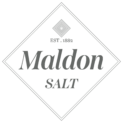Your online copy is your brand. The words on your blog, your social feeds and your landing pages are more than just ephemeral coded signals zooming through cyberspace. They’re the voice with which you want to speak. The call to action that you want to be heard. They invite your target audience to join you as you embark on a journey together. Get the combination of words and phrases right, and you can inspire trust, generate value and build mutually beneficial relationships that will hopefully stand the test of time. Get them wrong, and you risk compromising the value of your brand and losing prospects to your competitors.
No pressure, then.
With this in mind, it’s understandable that business leaders may feel apprehensive about outsourcing their copywriting to a third party. Inviting someone else to speak with your voice requires an enormous leap of faith. And when the results turned in by a freelance copywriter fall short of your expectations, it can be disheartening.
Fortunately, a really good content brief can ensure that the copy you receive back from your freelance copywriter or agency matches the idea in your head so perfectly that it’s almost as though you wrote it yourself.

When you’ve spent years or even decades building a brand, it’s easy to forget how much you take for granted your brand persona, its tone of voice and vocabulary. A freelancer, however, will approach your brand from a completely fresh perspective and may have little or no awareness of either your company or your brand. Even the most gifted copywriter can fail to deliver what you’re expecting, both in terms of content and tone of voice, when they don’t have a detailed brief to work from.
A content brief serves both as a roadmap and a rubric for success. It tells copywriters everything they need to know about your brand and your audience, and how to replicate your tone of voice so that it fits seamlessly with what you and your team have already created.
It eliminates ambiguity, and establishes your expectations and success criteria, with less back-and-forth over revisions and corrections clogging up the delivery pipeline. What’s more, a good brief helps to facilitate scalability. As your company and brand grow, so too will the need for consistently high-quality content. Master the art of the content brief and your content will be of consistent tone and quality, even if multiple copywriters are working on it at any given time.
Writing a content brief can be quite a balancing act. On the one hand, it needs to convey a substantial amount of information to the writer. On the other hand, a brief that is overly long and elaborate can be daunting to a copywriter who, in all probability, will likely have seen between two and six content briefs on any given day by the time they get to yours. Provide them with the knowledge they need to do their job well, while also trusting them to deliver a high-quality piece.
With that in mind, let’s take a look at what a comprehensive content brief should include:
The above will give your copywriter a clear idea of what you expect them to write. However, guidance on your tone of voice (ToV) can instruct them on how they should write your content. It may be worth taking the time to compile a ToV guide for all third-party copywriters who will be helping you to grow your brand through content.
It’s a good idea to include:
Comprehensive ToV guidelines can ensure tonal consistency across all your content even when different writers are working for you, thereby helping to maintain scalability.
Your content brief can provide writers with a structural blueprint for the content. A proverbial skeleton for a skilled wordsmith to flesh out. Broadly speaking, your brief’s structure is made up of three components:
Let’s take a look at each of these in greater detail.
Introduce the topic to be discussed and provide a hint of what is to come. You may also want to include some key quotes or stats for the writer to incorporate here in order to assert your brand authority and entice the reader.
Also include a preview of the coming content in the form of a short paragraph or bullet points incorporating the subheadings you wish to use.
Your main body breaks the topic into a series of subheadings. Each represents an aspect of the topic or an item on a list-style article. Subheadings are extremely important as they compartmentalise the information on screen visually, while also helping to give the copy a greater sense of structure and flow.
Your conclusion or outro neatly summarises the points made within the main body of the copy. It also includes a call to action to encourage the reader to further engage with your brand.
The call to action may be to click on a link to schedule an appointment, take the reader to your ‘Contact Us’ page, guide them to another piece of content within your site that they may find useful, or simply solicit feedback in the comments section.
Your content’s word count will give your copywriter an idea of the level of detail they need to provide in the content. A content brief that’s stuffed with specifics is all well and good, but even the best copywriters may struggle to cram it all into 500 words. Likewise, anything over 2,000 words runs the risk of the writer having to pad out the word count, thereby reducing its quality. What’s more, this is more than most readers care to read in one sitting.
In terms of Search Engine Optimisation, long-form content tends to perform better than shorter posts with posts, between 1,000 and 2,000 receiving almost 80% more backlinks. Aiming for a word count range of 1,000–1,500 words helps to ensure that your content is packed with enough detail for Google to consider it ‘helpful content’ while also ensuring that the writer does not need to resort to repetition or filler to pad out the word count.

A good copywriting brief provides the copywriter with everything they need to hit the ground running. However, it also avoids being overly long and prescriptive. Try and keep it concise, clear and comprehensive.
Include the following items in your copywriting brief checklist:
A great content brief deserves a great copywriter to spin your guidelines into gold. That’s where we come in. We offer a comprehensive range of copywriting services to a broad range of clients across numerous sectors.
If you want to chat about what we can do for you, get in touch with us today!











